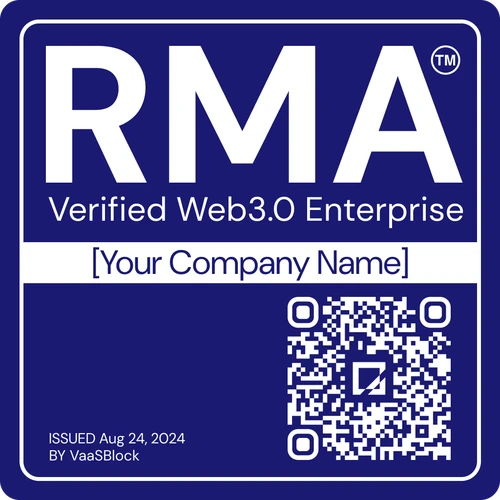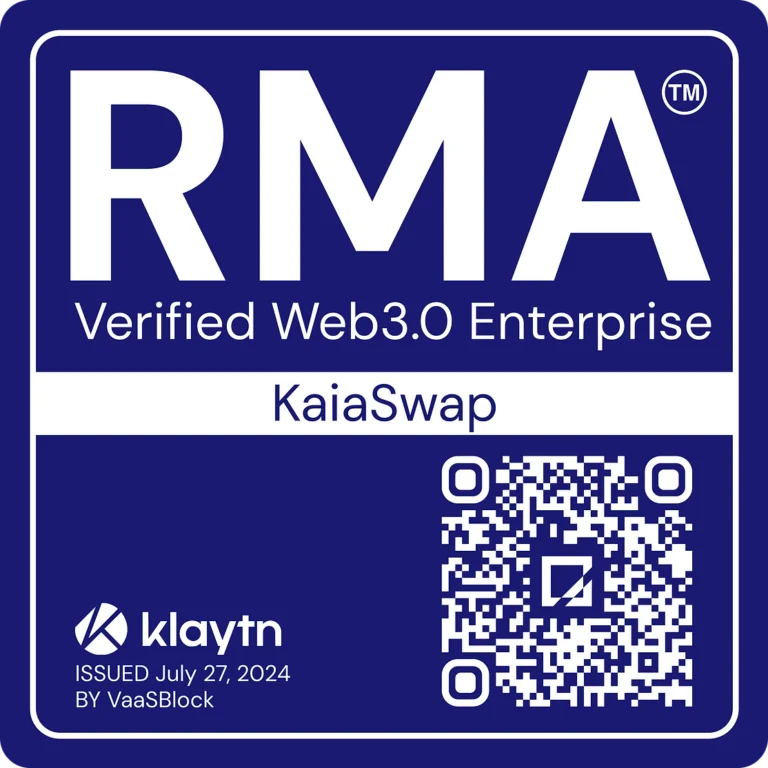
KaiaSwap
Risk Management
?Risk Management
The RMA™ is a blockchain credibility certification assessing governance, transparency, security, and results, providing trusted verification for businesses in Web3.
Analysis based on information collected and audited by VaaSBlock.

RMA™ Status: ✔ Active
Verification of 6 major compliance criteria.
Technology
?Technology
A collection of public facing information, data collected through partners and our own tools view we present a projects technology in one place for easy verification.
Analysis and testing of tech infrastructures.
Marketing
Alpha?Marketing
Top level look at a projects marketing capablities currently in alpha this section will grow to show quickly how a project promotes itself and the effectiveness.
Screening of user base and community feedback.
Background
?Background
Using multiple public facing sources across the web view a summary of a projects purpose, key achievements and general overview.
Collection of basic administrative documentation.
Risk Management
Last Updated
2025/07/02
Transparency
Transparency Score
Algorithmic assessment of a project’s transparency level, using multiple public data points to measure its commitment to compliance, documentation, and clarity in communication.
Transparency Score
Category Rank
A ranking that positions the organization among its industry peers, evaluating its relative performance based on key compliance, credibility, and transparency indicators.
Category Rank
KaiaSwap vs Banking & DeFi
VaaSBlock Rank
A global ranking that compares the organization against all entities listed on VaaSBlock, reflecting its overall credibility, transparency, and operational performance versus the full Web3 ecosystem.
VaaSBlock Rank
KaiaSwap vs All Listed Organizations
Transparency
Transparency Score
Transparency Score
Algorithmic assessment of a project’s transparency level, using multiple public data points to measure its commitment to compliance, documentation, and clarity in communication.
Category Rank
KaiaSwap vs Banking & DeFi
Category Rank
A ranking that positions the organization among its industry peers, evaluating its relative performance based on key compliance, credibility, and transparency indicators.
VaaSBlock Rank
KaiaSwap vs All Listed Organizations
VaaSBlock Rank
A global ranking that compares the organization against all entities listed on VaaSBlock, reflecting its overall credibility, transparency, and operational performance versus the full Web3 ecosystem.
RMA™
Contract –  0x8b989c…936d3bda
0x8b989c…936d3bda
Mint date – 07/26/2024
Token – ![]() 0x8b989c…936d3bda/1
0x8b989c…936d3bda/1
Full Report – ✘ Not available
Learn how to verify an RMACorporate Governance
The verification of fundamental governance, organizational structure, including verifying the entity’s legal registration and adherence to local laws and regulations.
Corporate
Governance

Team Proficency
Evaluation of an organization’s personnel, ensuring that crucial team members possess the expertise and dedication necessary to execute current business models and scale effectively.
Team
Proficiency

Technology & Security
Assessment of the organization’s technological framework, including blockchain integrations (where relevant), system architecture, and overall IT infrastructure.
Technology
& Security

Revenue Model
Comprehensively evaluation of a company’s income-generating strategies (how do they make or intend to make money), ensuring financial robustness and sustainability.
Revenue
Model

Results Delivered
The Results Delivered component of the RMA™ audit comprehensively evaluates an organization’s ability to achieve its goals and honor its commitments.
Results
Delivered

Planning & Transparency
The Planning and Transparency component of the RMA™ audit offers a thorough assessment of how an organization manages its workflow and prepares for unexpected challenges.
Planning &
Transparency

RMA™ Announcement
KaiaSwap has been issued with its first RMA™ badge from VaaSBlock, which provides the organization with additional credibility after meeting the required standards in all six audited areas. This is th… [Read More]
Organization Representative
Jimmy Yin, CEO of KaiaSwap
Quote
“[…] This recognition not only highlights our past achievements in DEX operations but also paves the way for future growth and development. We believe this endorsement will significantly enhance user trust in our DEX.”
Technology
Marketing
No Chain No Gain™ Podcast ⛉
This Organization is yet to join the No Chain No Gain™ Podcast and share insights on what makes their business trustable and innovative.
💡 NCNG generated over 1 Million impressions in its first six months of existence.
PR Impact
PR Impact
VaaSBlock provides estimations to the impact that traditional digital media can have on a project. This is an early release; more areas of PR are planned in future versions.
Search Terms ? Search TermsThese are the terms we discovered the article for on page one of Google. | Est. Traffic ? Estimated TrafficWe estimate how much traffic an article will get. Generally, our estimations are slightly higher than those of more established tools. We are working on the algorithm all the time, and results could change. | Est. Value ? Estimated ValueBased on the estimated traffic we generate an estimation for what this traffic would have cost to generate if you tried to target these users with ads. The positions for the article on google and the location of the traffic are the major factors in this estimation. | |||
|---|---|---|---|---|---|
KaiaSwap: Project Guide | Latest Updates, Presale & Airdrop source: web3.bitget.com | KaiaSwap: Project Gu… — KaiaSwap: Project Guide | Latest Updates, Presale & Airdrop source: web3.bitget.com | web3.bitget.com | |||
Swapscanner : No.1 DEX Aggregator on Kaia source: swapscanner.io | Swapscanner : No.1 D… Seen 2024-08-26T19:00:00.000Z Swapscanner : No.1 DEX Aggregator on Kaia source: swapscanner.io | Organic | swapscanner.io | ||
Official Statement on Kaiaswap source: Kaia Foundation | Official Statement o… Seen 2024-10-08T09:01:02.098Z Official Statement on Kaiaswap source: Kaia Foundation | medium.com | |||
iZUMi Launches KaiaSwap to Extend DEX-as-a-Service to Kaia Chain source: iZUMi Finance | iZUMi Launches KaiaS… Seen 2024-05-06T09:00:47.614Z iZUMi Launches KaiaSwap to Extend DEX-as-a-Service to Kaia Chain source: iZUMi Finance | Organic | izumi-finance.medium.com |
| Est. Traffic | Est. Value | ||
|---|---|---|---|
KaiaSwap: Project Gu… — | |||
Swapscanner : No.1 D… Seen 2024-08-26T19:00:00.000Z | |||
Official Statement o… Seen 2024-10-08T09:01:02.098Z | |||
iZUMi Launches KaiaS… Seen 2024-05-06T09:00:47.614Z |
Background
Organization Name – KaiaSwap
Category –  Banking & DeFi
Banking & DeFi
About
powered by irmaAI
irmaAIKaiaSwap describes itself as “the leading CLAMM DEX and Omni‑IDO platform” in the emerging Kaia blockchain ecosystem, an environment born from the February 2024 proposal to merge the Klaytn an…d Finschia networks into a single Asia‑focused chain According to its founders, the exchange went live in mid‑2024 with support from Klaytn Foundation and from iZUMi Finance, a DeFi firm that had already deployed its “DEX‑as‑a‑Service” framework on several chains. They claim the goal is to deliver capital‑efficient trading through an original Discretized‑Liquidity Automated Market Maker (DL‑AMM) engine while doubling as an Initial DEX Offering launchpad that can host fund‑raises for new tokens
KaiaSwap’s back story is intertwined with the broader Kaia chain narrative. When the Klaytn and Finschia communities approved their merger, Klaytn’s developer teams began courting DeFi builders to populate the forthcoming mainnet. iZUMi Finance—best known for its range‑bound liquidity model on Ethereum—announced in May 2024 that it would “extend DEX‑as‑a‑Service to Kaia” by launching a native DL‑AMM DEX dubbed KaiaSwap
Industry outlet Foresight News reported the platform as the chain’s “first native DL‑AMM DEX,” noting that it combined iZUMi’s liquidity math with Kaia’s low‑fee infrastructure to create what the builders tout as a safer, more accessible exchange
The team says that by using discretized liquidity—essentially slicing concentrated ranges into granular steps—they can give market‑makers more predictable capital efficiency than the Uniswap v3 model while avoiding toxic flow from bots.
The launch coincided with Kaia‑Foundation’s “D2I” (DeFi‑to‑Infrastructure) program, a grants scheme designed to import flagship protocols. A Medium post from the foundation boasted that iZUMi and stable‑swap specialist Wombat were the first two projects selected, each receiving incentives to bootstrap liquidity; KaiaSwap and Wombat’s Capybara DEX went live days apart as proof‑of‑concepts for the merged chain’s DeFi stack
Kaia governance minutes later indicated that KaiaSwap had grown its average daily TVL from roughly $255 k in May to $1.16 m by July, burning more than 13,000 KLAY in July trading‑fee revenue and pledging 400,000 KLAY to farm incentives for August
Independent dashboards on DefiLlama show more subdued figures—about $220 k in TVL as of spring 2025—but still list KaiaSwap as the largest liquidity hub actually operating on the chain
Beyond liquidity mining, KaiaSwap participates in Kaia Portal, the chain’s mission‑and‑points hub. Portal documentation states that users who provide liquidity “closer to the current price range” on DEXs like KaiaSwap earn extra points that may convert to future token rewards, effectively gamifying range‑bound LP behaviour
Marketing materials argue that this approach benefits both sides of the order book by attracting sophisticated market makers and rewarding smaller users who supply stable‑coin pairs within tight spreads. A Mirror .xyz post by the team frames these incentives as mirroring centralized‑exchange trading competitions, saying they invited dedicated market‑making partners to seed order flow during KaiaSwap’s first month
Security and compliance form a second pillar of the pitch. In July 2024 KaiaSwap became one of the earliest DeFi platforms to earn VaaSBlock’s RMA™ badge after meeting baseline standards in corporate governance, revenue transparency, technology controls and team proficiency
CEO Jimmy Yin characterized the endorsement as a “trust multiplier,” arguing that third‑party validation matters when courting institutions weary of on‑chain counter‑party risk. While RMA is a relatively new framework, its checklist of documentation, KYC and code review provides at least a minimal due‑diligence layer for potential partners evaluating whether to deploy liquidity or conduct IDOs on KaiaSwap. Public audits by outside security firms have not yet been posted, and daily spot volume tracked by CoinGecko remains below one thousand dollars, so skeptics note that real institutional adoption is still nascent
From a technical standpoint the exchange markets itself as a hybrid between an order‑book DEX and an automated market maker. Its analytics portal displays limit and range orders against on‑chain liquidity bins, an architecture the builders say offers the composability of AMMs with the precision of books
Liquidity providers deposit assets into discrete ticks, choose price bands, and collect maker fees proportional to time‑in‑range and trade size; takers route swaps via smart‑contracts that aggregate the cheapest bins. The team claims the DL‑AMM improves capital efficiency by as much as 3–5 × over traditional constant‑product pools, though those figures are self‑reported and depend heavily on market conditions. Range concentration, of course, cuts both ways; if price escapes a band, LPs sit idle until they rebalance.
Strategically, KaiaSwap’s value proposition hinges on riding Kaia chain’s attempt to court hundreds of millions of end‑users from the Kakao‑ and LINE‑messaging ecosystems once the mainnet launches at scale. Kaia’s website pitches itself as a “familiar gateway” for Asia, merging two corporate lineage blockchains into a single network with payments, NFTs and DeFi baked in
Kaia
If that vision materializes, KaiaSwap hopes to be the default liquidity venue—akin to how PancakeSwap became synonymous with BNB Chain. The DEX already flags support for account‑abstraction wallets and multi‑sig admin keys, betting that user‑friendly custody and institutional governance will attract new capital. Observers point out that the approach is similar to iZUMi’s earlier rollout of platform forks—such as iZUMi’s own iZiSwap on Ethereum and zkSync—underscoring the group’s strategy of exporting its DL‑AMM template to every rising Layer‑1.
Community‑wise, KaiaSwap maintains a modest but growing social presence: roughly 5.6 k followers on X since April 2024 and an open Discord with event channels for Korean and English speakers
The Twitter account promotes weekly airdrop quests, ecosystem AMAs, and cross‑campaigns with Kaia Portal. Meanwhile CEO Jimmy Yin, previously a co‑founder of iZUMi Finance, appears regularly in Kaia ecosystem podcasts and VaaSBlock’s “No Chain No Gain” series, emphasizing that KaiaSwap wants to replicate what he calls iZUMi’s “deep liquidity, low slippage” formula in a brand‑new market. In one interview the team stated that KaiaSwap will spin out an “Omni‑IDO” module allowing projects to launch tokens on multiple EVM chains simultaneously while anchoring initial liquidity on Kaia—an ambitious plan that could widen exposure for new listings if bridge UX and compliance hurdles are solved early.
Critics caution that KaiaSwap’s head‑start is not guaranteed to last. Competing DEX concepts like Wombat’s stableswap and Dragonswap’s derivative AMM are scheduled to join Kaia’s launch cohort, while entrenched platforms such as Curve or Uniswap could port over once traction is clear. Volume on KaiaSwap today averages under $1 k a day per CoinGecko, and Total Value Locked hovers at the lower‑six‑figure range—tiny by DeFi standards fifteen years into the space. Developers are still waiting for the Kaia mainnet’s full release, planned for Q3 2024 after regulatory work to register the Kaia DLT Foundation dragged on, according to a progress update published by foundation engineers
Until then most liquidity sits on testnet or provisional bridges, leaving KaiaSwap effectively in a guarded‑launch mode. The team’s own D2I reports concede the exchange remains reliant on ecosystem subsidies—400 k KLAY per month in incentives—and aggressive burn campaigns to show fee accrual.
Even so, early indicators suggest traction within its niche. Governance records reveal a steady climb in TVL month‑over‑month, and the exchange’s commitment to burning KLAY from revenue mirrors best practices seen on mature chains, signaling a willingness to reduce token inflation rather than feed it. Combined with the RMA badge and partner endorsements from Klaytn Foundation, iZUMi Finance, Wombat and Kaia’s D2I council, KaiaSwap is positioning itself as the liquidity backbone for a chain that is yet to debut at full throttle. Investors and builders evaluating the Kaia landscape therefore view KaiaSwap as both an experiment in next‑generation AMM design and an early‑mover play on a freshly merged Asian Layer‑1. Whether that bet pays off will depend on mainnet timelines, regulatory clarity, and the team’s ability to convert incentive‑driven users into sticky market makers once subsidies taper off. For now, KaiaSwap offers an intriguing—if still small‑scale—window into how concentrated‑liquidity DEXes might evolve when paired with account abstraction and chain‑native incentive programs in an up‑and‑coming Web3 market.
Read More
Creation Date
December 2025
Headquarters
Seoul, Republic of Korea
Organization Maturity Level
Early-Stage
RMA™ Type
Self-Assessment
Useful Links
Website – kaia.io
Notable Achievements
2021
Creation
- vaasblock.com /
- Banking & DeFi /
- KaiaSwap








